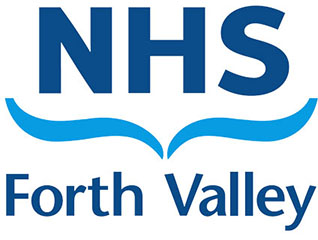Potential Development of New DRT Service in Clackmannanshire
NHS Forth Valley is exploring the potential to introduce a new, more flexible transport service between Forth Valley Royal Hospital and Clackmannanshire.
This potential new service could replace the existing H1 and H2 bus services with a more responsive transport service, tailored to meet the individual needs of patients and visitors. It would also offer local residents in a number of communities across Clackmannanshire a more frequent transport service to Forth Valley Royal Hospital compared with the existing H1 and H2 services. These currently provide a two hourly service to the hospital from a number of locations and an hourly service from Alloa.
Under the potential new arrangements, people living in areas where it would take more than an hour to reach the hospital using existing public transport and residents living in a number of areas which would require more than one change to reach hospital would be eligible for the potential new service. This includes around 20,000 residents from towns and villages such as Sauchie, Fishcross, Coalsnaughton, Tillicoultry, Dollar, Clackmannan and Muckhart.
They would be able to book the potential new Demand Responsive Transport (DRT) service which would pick patients and visitors up at home and drive them to either Tullibody (First Bus 60) or Kincardine to catch a connecting direct bus service to Forth Valley Royal Hospital (Stagecoach Express services X24, X26 & X27 from the end of November 2013). The small number of staff who use the existing H1 and H2 services to travel to the hospital for early shifts would also be covered by any new DRT service. In addition, the Scottish Ambulance Service would continue to provide patient transport for Clackmannanshire residents with serious medical or mobility issues.
The potential to develop a new DRT service is being explored as the existing H1 and H2 NHS supported bus services continue to be poorly used with very few passengers actually using the buses to travel to and from the hospital. In many cases the 30 seat buses travelling from Alloa to the hospital are either empty or carry only an average of four passengers at a subsidy of around £28 for each return journey and a cost of more than £24,500 a month. A recent travel survey carried out by the Clackmannanshire Third Sector Forum’s Community Transport Steering Group also found that the vast majority of passengers were using the H1 and H2 services to travel to destinations within Clackmannanshire rather than using the buses to access the hospital.
In addition, parts of the existing NHS supported H1 and H2 routes are now served by commercial buses and the continuation of a supported service which competes with these buses is not a good use of NHS resources and could also potentially lead to commercial services being withdrawn from the Clackmannanshire area. Clackmannanshire Council also run a number of supported bus services which serve many of the areas covered by the existing H1 and H2 services.
Tom Steele, NHS Forth Valley’s Strategic Director of Property and Facilities, said:
It is simply not sustainable or good use of NHS resources to continue to run the existing H1 and H2 bus services as very few passengers actually use these services to travel to Forth Valley Royal Hospital.
“We are keen, however, to support access to existing public transport links and this potential new DRT service provides a good interim solution while work continues to develop a community-led transport service which meets the wider needs of local residents across Clackmannanshire.”
Robert Walters, Chief Officer of the Clackmannanshire Third Sector Interface, said:
We have been working closely with NHS Forth Valley and Clackmannanshire Council, through the Community Transport Steering Group, to review transport services across Clackmannanshire and identify gaps. This will help develop a number of community-led solutions, including the possibility of introducing new community transport services, run by the third sector.
“These could provide employment, training and volunteering opportunities for local people as well as providing improved transport links to local facilities and amenities across Clackmannanshire.”
The DRT proposal will be discussed with key stakeholders, including Clackmannanshire Council and The Clackmannanshire Third Sector Interface, over the next few weeks to seek feedback and help inform how a potential future DRT hospital service could operate. Any proposed change to the existing H1 and H2 services would be submitted to Falkirk Council’s Planning Committee for consideration.




